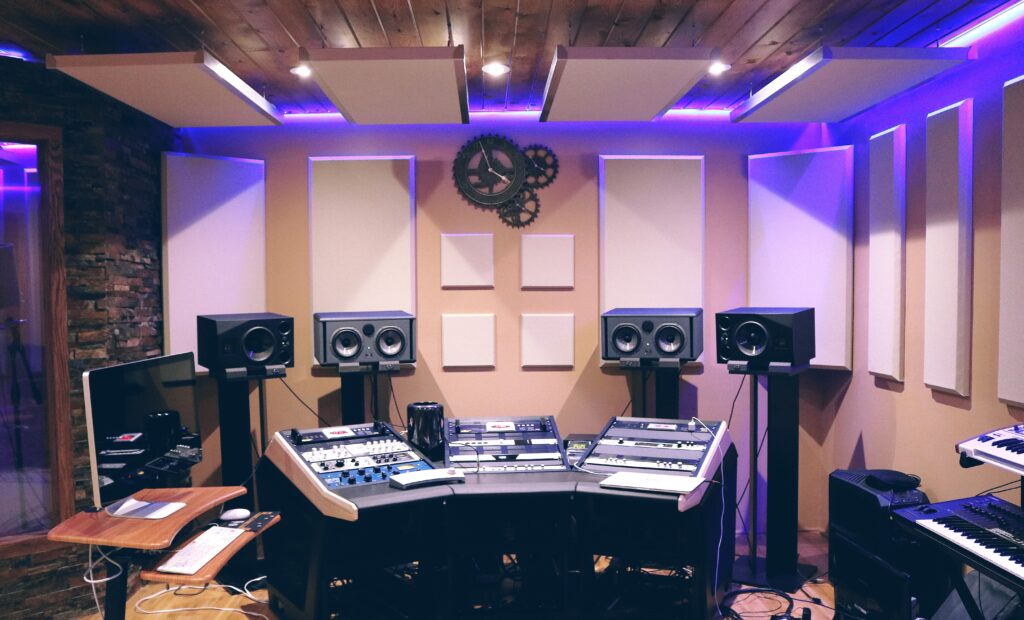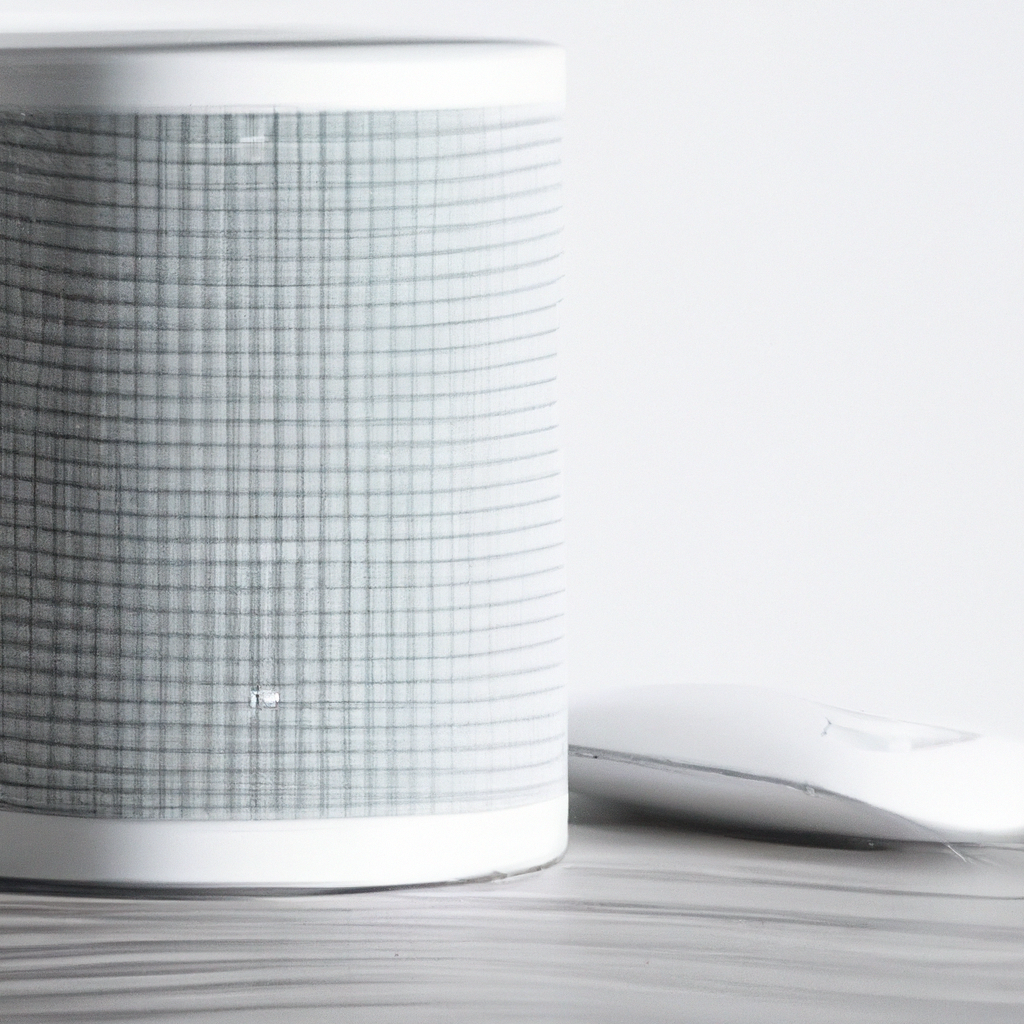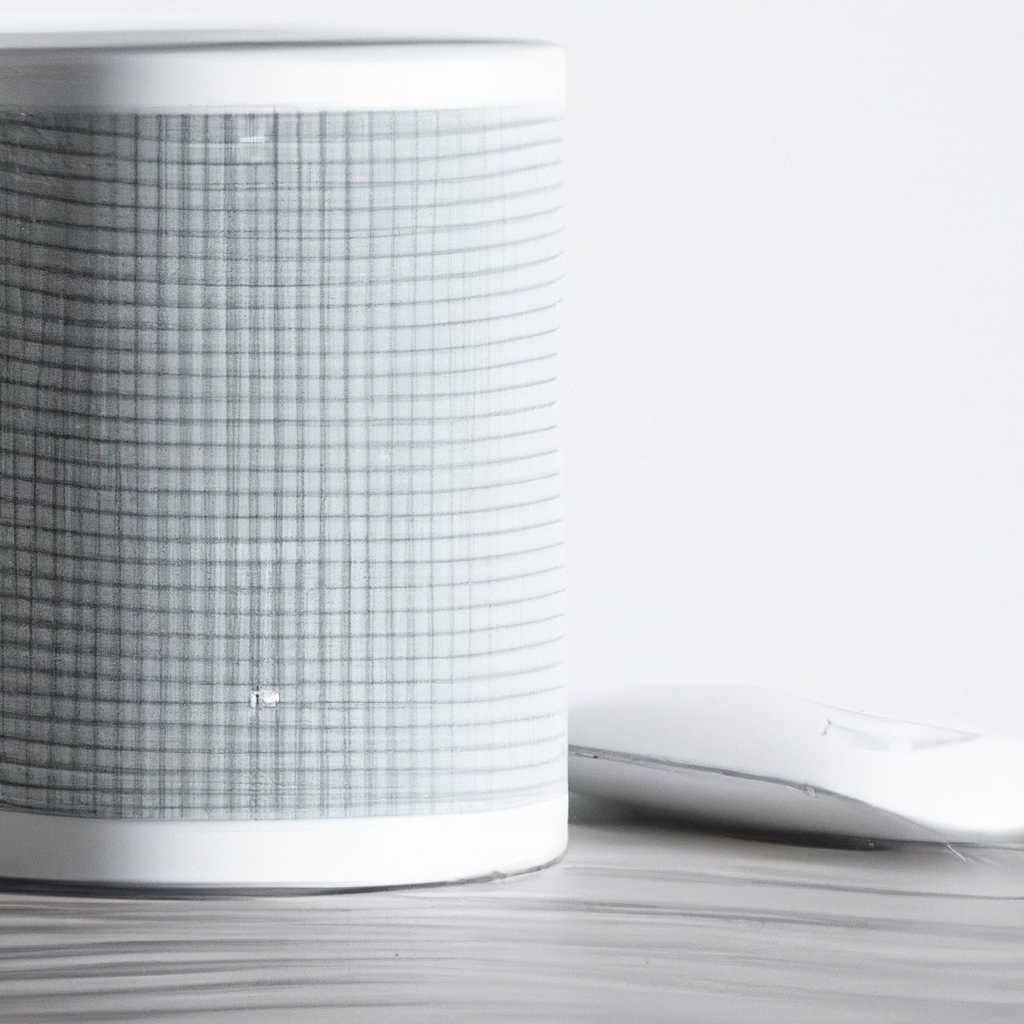Imagine the convenience of effortlessly controlling your living room with just the sound of your voice. Say goodbye to fumbling with remotes and simply ask your devices to turn on the lights, adjust the temperature, or even play your favorite music. In this article, we will explore the step-by-step process of setting up voice control in your living room, allowing you to transform your space into a cutting-edge smart home oasis. Get ready to embrace the future of technology and elevate your living room experience with the power of your voice.

Choosing the Right Voice Assistant
Understanding the Different Options
When it comes to voice assistants, there are three major options to consider: Amazon Alexa, Google Assistant, and Apple Siri. Understanding the differences between these assistants is crucial in choosing the right one for your needs.
Amazon Alexa, known for its compatibility with a wide range of smart home devices, offers an extensive library of skills and is integrated into the popular line of Amazon Echo smart speakers. Google Assistant, on the other hand, is deeply integrated into the Google ecosystem and excels in its ability to answer questions and provide accurate information using Google’s vast database. Apple Siri, primarily available on Apple devices, offers seamless integration with the Apple ecosystem and allows for voice control of compatible devices.
Comparing Amazon Alexa, Google Assistant, and Apple Siri
To make an informed decision, let’s compare the three voice assistants in various aspects:
- Compatibility: Amazon Alexa has a larger number of compatible devices compared to Google Assistant and Apple Siri. However, Google Assistant has broader compatibility with various third-party platforms, and Siri offers excellent integration with Apple devices.
- Skills and Capabilities: Amazon Alexa boasts the largest library of skills, allowing users to add functionality to their voice assistant. Google Assistant leverages Google’s vast knowledge graph for accurate responses and offers natural language processing capabilities. Siri, although not as extensive in skills as Alexa and Assistant, integrates seamlessly with Apple services like HomeKit.
- Voice Recognition: All three voice assistants have advanced voice recognition technology, but Amazon Alexa and Google Assistant are often praised for their superior accuracy.
Considerations for Compatibility
Before making a final decision, it’s important to consider compatibility with your existing devices. Check if the voice assistant supports the smart devices you already own or plan to purchase. Additionally, ensure that the voice assistant you choose is compatible with your preferred control hub or smart speaker to create a seamless user experience.
Deciding on the Control Hub
Benefits of Using a Smart Speaker
A smart speaker serves as the control hub for your voice assistant, providing a centralized location for voice commands and controlling compatible devices. Choosing a smart speaker comes with several benefits:
- Voice Command Accessibility: Smart speakers are always ready to listen, allowing you to control your devices with just your voice.
- Audio Playback: Enjoy streaming music, podcasts, and audiobooks through your smart speaker, making it a versatile entertainment device.
- Information and Assistance: Ask your voice assistant questions, get weather updates, and receive personalized recommendations through your smart speaker.
Alternatives to Smart Speakers
While smart speakers are popular control hubs, they might not be the best fit for everyone. If you prefer a different setup, consider these alternatives:
- Smartphone App: Many voice assistants offer dedicated smartphone apps that allow you to control devices and interact with your voice assistant without the need for a smart speaker.
- Smart Displays: These devices combine the functionality of a smart speaker with a touchscreen display, providing visual feedback alongside voice control.
- TV Streaming Devices: Some streaming devices, such as the Amazon Fire TV or Google Chromecast, have built-in voice assistants that can control compatible devices and provide additional entertainment options.
Factors to Consider in Choosing a Control Hub
When selecting a control hub, keep the following factors in mind:
- Compatibility: Ensure that the control hub supports your desired voice assistant and is compatible with the devices you own or plan to purchase.
- Audio Quality: If music playback is important to you, consider the audio quality and speaker configuration of the control hub.
- Display Options: If visual feedback or video streaming is desirable, consider a control hub with a built-in display or compatibility with smart displays.

Setting Up the Voice Assistant
Creating an Account
Before setting up your voice assistant, you will need to create an account with the provider. This typically involves signing up using an email address and creating a password. Follow the prompts on the voice assistant’s website or app to create your account.
Downloading and Installing the Voice Assistant App
To set up your voice assistant, you will need to download and install the corresponding app on your smartphone or tablet. Visit your device’s app store and search for the voice assistant you selected. Once downloaded, open the app and sign in with your account credentials.
Giving Permission and Enabling Access
Upon opening the app, you will typically be prompted to grant permissions and enable access to certain features, such as accessing your microphone, contacts, or location. These permissions are necessary for the voice assistant to function properly and provide a seamless experience. Follow the on-screen instructions to grant the necessary permissions.
Connecting Devices to the Control Hub
Identifying Compatible Devices
Once your voice assistant is set up, it’s time to connect your smart devices to the control hub. Ensure that the devices you own or plan to purchase are compatible with your chosen voice assistant. Most voice assistant apps provide a list of supported devices or a setup wizard to guide you through the process.
Linking the Devices to the Control Hub
To link a device to your control hub, follow these general steps:
- Open the voice assistant app and access the device setup section.
- Select “Add New Device” or a similar option to initiate the pairing process.
- Follow the on-screen instructions to put the device in pairing mode and establish a connection with the control hub.
- Once the pairing is successful, the device will appear in the app, ready to be controlled using voice commands.
Troubleshooting Connection Issues
If you encounter any issues during the device setup process, try the following troubleshooting steps:
- Ensure that the control hub and the device you are trying to connect are within range of each other and have a stable internet connection.
- Restart both the control hub and the device, as sometimes a simple restart can resolve connectivity issues.
- Check for firmware updates for both the control hub and the device, as outdated software can lead to compatibility issues.
- If the issues persist, consult the manufacturer’s support documentation or contact customer support for further assistance.

Exploring Voice Control Features
Basic Voice Commands for Controlling Devices
Once your devices are connected, you can start using basic voice commands to control them. Experiment with simple commands like “Turn on the lights” or “Set the thermostat to 72 degrees.” Each voice assistant has its own set of predefined commands, so be sure to familiarize yourself with the available commands for your chosen voice assistant.
Advanced Voice Control Features and Customization
In addition to basic commands, voice assistants offer a range of advanced features and customization options. These include:
- Voice Profiles: Some voice assistants allow you to set up individual voice profiles, enabling personalized responses and tailored experiences for different users.
- Shortcuts and Routines: Create custom voice commands that trigger a series of actions simultaneously. For example, saying “Movie night” can dim the lights, lower the blinds, and play your favorite movie on the TV.
- Third-Party Integrations: Explore the capabilities of your chosen voice assistant’s skills marketplace, and integrate with popular apps and services to enhance functionality and automate tasks.
Integrating Voice Control with Smart Home Routines
Smart home routines allow for seamless automation of multiple devices with a single voice command. By creating routines, you can set up custom scenes that coordinate the behavior of different devices. For example, saying “Good night” could turn off all lights, lock the doors, and adjust the thermostat to an optimal sleeping temperature. Experiment with routines to streamline your daily routines and make your living room smarter.
Expanding the Voice Control Ecosystem
Adding Additional Smart Devices
As you become comfortable with voice control in your living room, you may want to expand the ecosystem by adding additional smart devices. Consider the following:
- Smart Lighting: Control the color, brightness, and scheduling of your lights using voice commands.
- Smart Plugs: Make any device smart by plugging it into a smart plug, allowing you to control it with your voice assistant.
- Smart Thermostats: Adjust the temperature in your living room using voice commands for optimal comfort and energy efficiency.
Configuring Voice Control in Multiple Rooms
If you have voice assistants in other rooms, you can configure them to control devices in those specific rooms. For example, a voice assistant in the bedroom can control the lights and TV in that room, while a separate voice assistant in the kitchen can control the appliances and smart speakers in that area. Configure each voice assistant according to the devices present in its respective room to enhance convenience and control.
Extending Voice Control beyond the Living Room
Voice control is not limited to the living room alone. Consider extending voice control to other areas of your home, such as bedrooms, kitchens, or even outdoor spaces. By doing so, you can control various devices and create a fully integrated smart home experience throughout your entire living space.

Securing Your Voice Control Setup
Protecting Privacy and Data
As with any connected devices, it is important to prioritize privacy and data protection. Follow these best practices to ensure a secure voice control setup:
- Strong Passwords: Use unique and strong passwords for your voice assistant account to prevent unauthorized access.
- Two-Factor Authentication: Enable two-factor authentication whenever available to add an extra layer of security to your account.
- Privacy Settings: Review and adjust the privacy settings within the voice assistant app to control the collection and usage of your data.
- Guest Mode: Consider enabling guest mode when you have visitors to limit their access to personal information and preferences.
Enabling Voice Authentication and Multi-Factor Authentication
Some voice assistants offer voice authentication features that recognize your unique voice pattern, adding an extra layer of security to voice commands. Additionally, consider enabling multi-factor authentication for your voice assistant account, which requires additional verification steps such as entering a code sent to your phone or email. These security measures ensure that only authorized users can control your devices via voice commands.
Regular Software Updates and Security Patches
To protect your voice control setup from potential vulnerabilities, regularly update the firmware and software of your voice assistant, control hub, and connected devices. These updates often include security patches and bug fixes that address known vulnerabilities and ensure optimal performance and security.
Troubleshooting Common Issues
Problems with Voice Recognition
If you’re experiencing issues with voice recognition, try these troubleshooting steps:
- Speak Clearly: Ensure that you speak clearly and at a moderate pace to improve voice recognition accuracy.
- Minimize Background Noise: Reduce background noise in your living room as it can interfere with voice recognition.
- Retrain Voice Model: If your voice assistant offers voice training options, consider retraining the voice model to improve recognition accuracy.
- Check Microphone Settings: Verify that the microphone on your control hub or device is not obstructed and is correctly configured.
Devices Not Responding to Voice Commands
If devices are not responding to voice commands, consider these troubleshooting steps:
- Check Connectivity: Ensure that both the control hub and the device are properly connected to the internet and functioning correctly.
- Restart Devices: Try restarting both the control hub and the device in question to resolve any temporary issues.
- Check Compatibility: Confirm that the device is compatible with your chosen voice assistant and control hub.
- Update Firmware: Check for firmware updates for both the control hub and the device, as outdated software can cause compatibility issues.
Interference and Connection Problems
If you’re encountering interference or connection problems, follow these troubleshooting steps:
- Move Devices: Experiment with different device placements to reduce interference caused by physical obstructions or distance from the control hub.
- Check Wi-Fi Signal: Ensure that the control hub and devices have a strong and stable Wi-Fi signal for consistent connectivity.
- Router Placement: Position your Wi-Fi router in a central location to provide better coverage throughout your living room and minimize signal interference.
- Check for Interference Sources: Identify and eliminate potential sources of interference, such as other wireless devices or nearby electronics that may disrupt the Wi-Fi signal.

Optimizing the Voice Control Experience
Positioning Smart Speakers for Maximum Coverage
To optimize the voice control experience, consider the placement of your smart speakers:
- Central Location: Position smart speakers in the center of the living room to ensure maximum coverage and accessibility from different areas.
- Avoid Obstructions: Keep smart speakers away from walls and large obstructions that may hinder sound projection and voice recognition.
- Stereo Pairing: If supported, consider setting up a stereo pair of smart speakers for better audio quality and surround sound experience.
Improving Voice Recognition Accuracy
To enhance voice recognition accuracy, follow these tips:
- Reduce Ambient Noise: Minimize background noise by closing doors and windows or using noise-canceling techniques such as acoustic panels or curtains.
- Avoid Echo: Echo can interfere with voice recognition, so use rugs, curtains, or furniture to dampen sound reflection and prevent echo.
- Voice Training: If available, take advantage of voice training features provided by your voice assistant to improve recognition accuracy.
Personalizing Voice Assistant Settings
Most voice assistants offer settings that allow personalization of the user experience. Explore the settings in the voice assistant app to adjust preferences such as language, voice feedback, and units of measurement. Personalizing the voice assistant settings will help tailor the experience to your preferences and make voice control in your living room more enjoyable.
Considering Voice Control Limitations
Limitations of Voice Control Technology
While voice control technology has evolved significantly, it does have certain limitations:
- Background Noise: Excessive background noise can impact voice recognition accuracy, making it challenging for the voice assistant to understand commands.
- Accents and Dialects: Voice assistants may have difficulty understanding certain accents or dialects, leading to lower recognition accuracy.
- Complexity: Some complex commands or requests may not be fully understood by voice assistants, necessitating manual control for more intricate tasks.
Alternatives to Voice Control
If voice control is not suitable for your needs, consider these alternatives:
- App Control: Most smart devices have dedicated apps that provide control over various features and settings.
- Remote Control: Use the physical remote control that accompanies specific devices to manage functions without relying on voice commands.
- Manual Control: For certain tasks, manual control may still be the most practical option, such as adjusting settings directly on the device or using physical switches.
Future Developments in Voice Technology
Voice control technology continues to advance rapidly, and the future holds exciting possibilities. Enhanced voice recognition, expanded device compatibility, and improved natural language processing are just a few areas expected to see significant advancements. Stay curious and open to new developments as the voice control ecosystem evolves to meet your needs more effectively.
By following the steps outlined here, you can set up voice control in your living room, enhance convenience, and transform your daily routine. Embrace the power of voice assistants and smart home devices to create a more seamless and enjoyable living environment.
